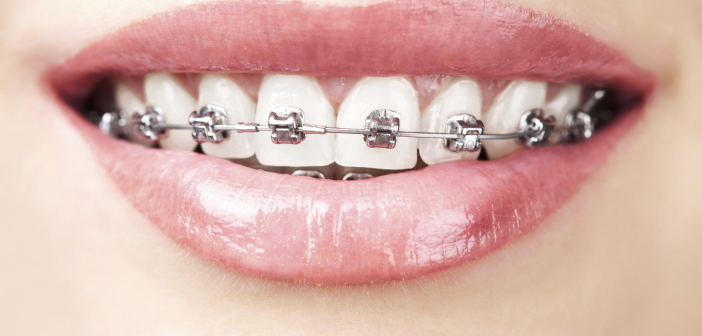Dental technology is more advanced than ever, and this has given patients quite a few options when it comes to straightening their smile. Cooper Orthodontics states, “While traditional metal braces still play an important role in the field of oral health, some patients would like to avoid the look and feel of these devices.” Read ahead for a look at some of the most popular types of braces and how you can choose which style is right for you.
Traditional Metal Braces
What we know as modern metal braces have been used for nearly 100 years. These orthodontic devices are comprised of posts that are attached directly to the surface of teeth and metal wires that attach the posts to one another. The wires can be tightened to apply pressure to the teeth and pull them back into place. The primary advantage of these braces is their low cost.
Ceramic Braces
Ceramic braces are similar to metal braces in quite a few ways, but they also have some unique advantages. Instead of using bright metal posts, ceramic posts that match the color of one’s natural teeth are used. These devices are much less noticeable once they have been attached to the teeth. In addition to costing a bit more, ceramic braces are generally not as sturdy as their metal counterparts. Your dentist might also suggest avoiding ceramic braces if your teeth are particular fragile because the ceramic can rub away at the enamel.
Lingual Braces
Even though ceramic braces are much less noticeable than metal braces, many patients would like to avoid the appearance of braces in their mouth completely. For these patients, lingual braces might be an ideal option. Instead of attaching the braces to the front of the teeth, lingual braces are attached to the back of the upper or lower set of teeth. The primary disadvantage of these braces is the amount time that it takes to install and adjust them. This process is much more tedious, and your surgeon might charge more for the extra time. Lingual braces have also been known to irritate patients’ tongues.
Invisalign Aligners
Invisalign is one of the most advanced treatment systems for malocclusion. Instead of choosing braces of any type, clear trays are used to apply pressure to a patient’s teeth to push them back to the correct position. The trays are specially made for every patient and are generally changed out every two weeks. In addition to being nearly invisible once they are in the mouth, patients can take out their trays at any time to eat or brush their teeth. Braces are often needed for complicated cases, but Invisalign aligners are generally just as effective at treating moderate malocclusion.
Which Is Right for Me?
There is no single solution that will work for every patient. You and your surgeon will need to sit down and discuss all of these options to see which type of braces (or trays) will best suit your own needs.




